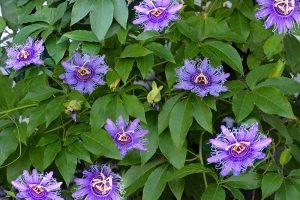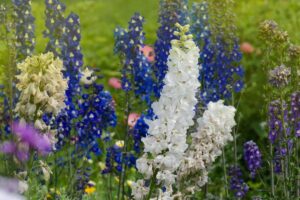Leaves on plants are responsible for photosynthesis, maintaining the health of the plant. When diseases come calling, the foliage is often where the first signs of trouble emerge.
I like to think of them as similar to maritime signal flags. A dot with a dark halo? Rust aboard! A large brown patch? Keep clear, we are blighted by botrytis. Skull and crossbones? Pirates!
I haven’t personally run into that last one in my garden, but the first two I have seen on my fuchsia plants.
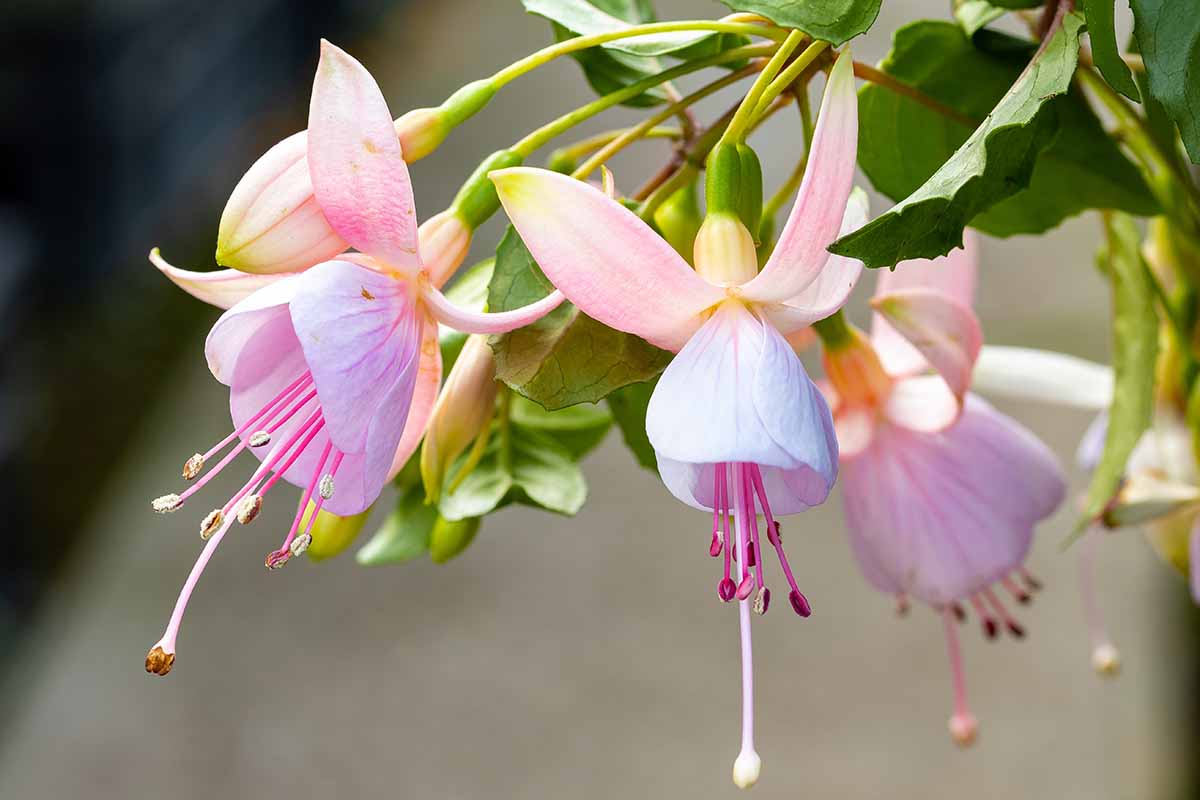
We link to vendors to help you find relevant products. If you buy from one of our links, we may earn a commission.
Fuchsia plants aren’t especially prone to diseases but when pathogens come knocking, the leaves are the place to look for clues. Every common disease that attacks these plants will manifest in some way on the foliage.
Once you know what to look for, it’s that much easier to figure out a solution.
Of course, avoiding disease issues in the first place is much better than trying to address them after the fact, and our guide to growing fuchsia can help with that.
Coming up, here are the common fuchsia diseases we’re going to cover:
3 Fuchsia Diseases
Be aware that some fuchsia leaf symptoms might be related to pest infestations rather than diseases.
Western flower thrips (Frankliniella occidentallis) cause distorted, crinkled leaves and silvery coloration. Fuchsia gall mites (Aculops fuchsiae) cause distorted leaves and stems.
Just because something strange is happening on the foliage, keep in mind that it doesn’t necessarily point to disease so you’ll need to look for further clues.
Here are three common issues you need to be aware of:
1. Botrytis Blight
Botrytis blight is caused by the same fungal pathogen (Botrytis cinerea) that causes gray mold in crops like strawberries and raspberries.
When the fungus infects your plant, it will cause soft, brown patches on the flower petals. You will also see brown patches and gray fuzz on the leaves, as well.
It will also prevent flowers from forming.
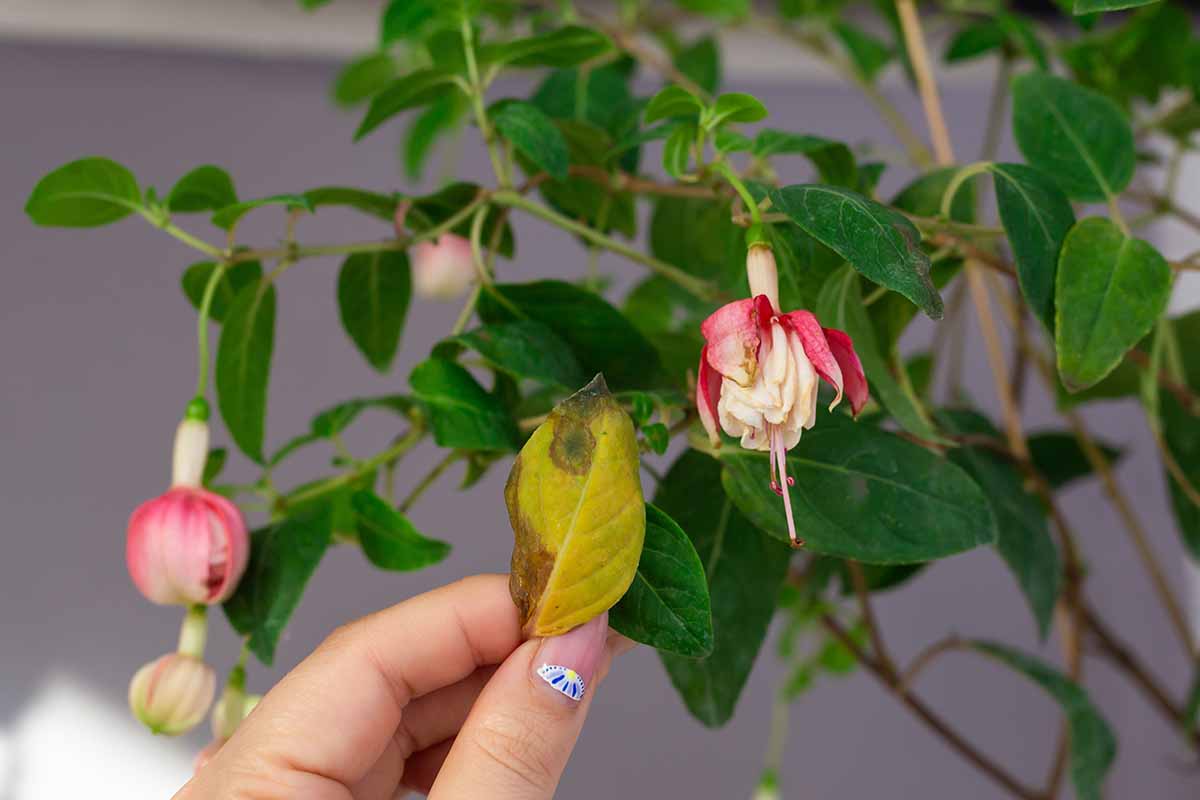
If you’ve ever tackled this disease on other species, like strawberries, then you know the routine. In the case of fuchsia plants here’s what you need to know.
The pathogen requires moisture to survive, so high humidity and water are its friends. Rain, watering on the foliage rather than the soil level, and crowded plants will all increase the incidence of this disease.
For that reason, minimizing moisture by watering at the soil level, and pruning and spacing plants appropriately is crucial.
If you see symptoms of the disease, don’t just grab the closest fungicide and spray your plant. This pathogen has a bad reputation for becoming resistant to fungicides.
Because this resistance varies depending on the region, the best tactic is to call your local extension office when you first notice symptoms.
They should be able to tell you what fungicide will be effective against the gray mold strains in your area.
To learn about other reasons why your fuchsia may fail to bloom, read our guide.
2. Damping Off
Damping off is a common disease that can infect hundreds of species of plants, causing a variety of different symptoms. In fuchsias, it often causes the seeds to fail to germinate.
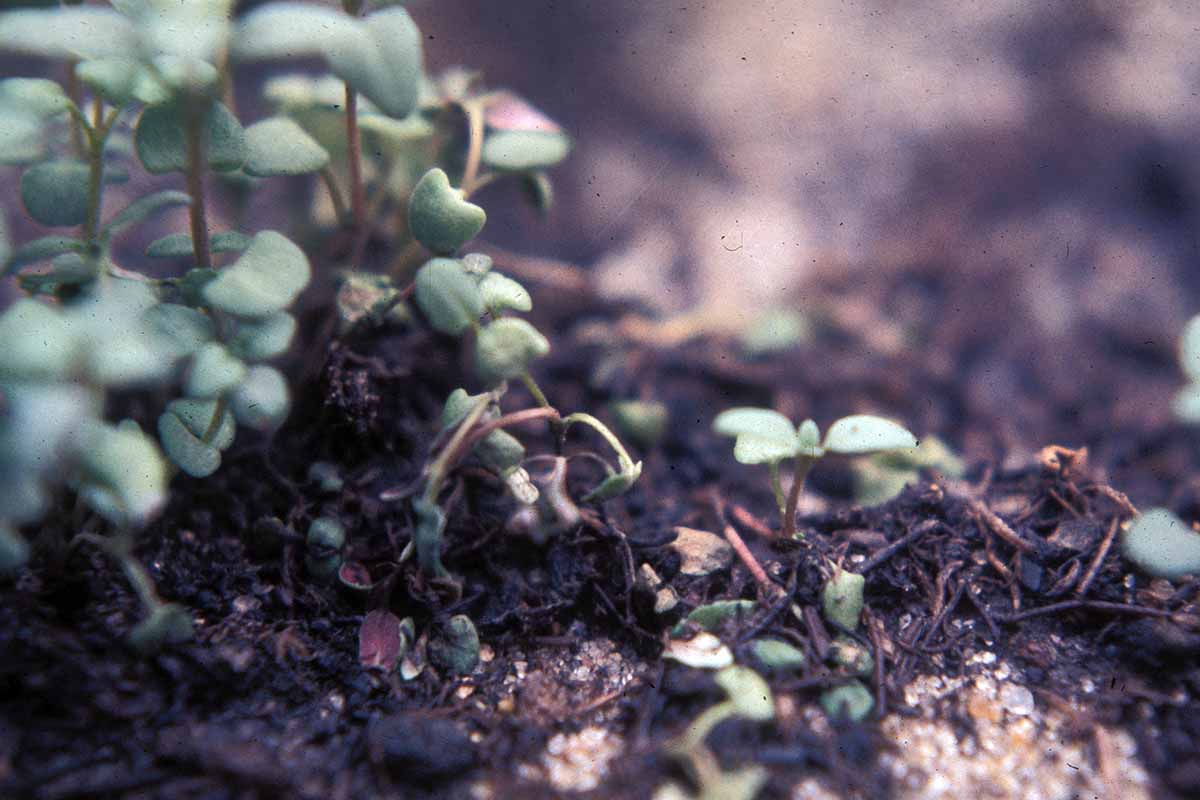
If the seeds do germinate, the resulting seedlings might be stunted, or may wilt. They might also form water-soaked lesions at the base of the stems that causes them to collapse and die.
Caused by fungi in the Rhizoctonia and Fusarium genera and water molds in the Pythium genus, these pathogens travel in water or on infected tools, shoes, gloves, or pretty much anything else it comes in contact with. They can also be carried by aphids and whiteflies.
To avoid it, always clean your pots and tools before and only use fresh potting soil. Don’t overcrowd your seedlings and be sure to water from the bottom of your trays or pots.
If your plants become symptomatic, dispose of them, as they can’t be saved. To learn more, read our guide to damping off.
If your plant is wilting and you’re not sure damping off is the cause, our guide to fuchsia wilt can help you narrow the problem down.
3. Rust
I don’t want to talk about fuchsia rust. I’d like to just live in my fantasy world where it doesn’t exist. But talk about it we must.
Rust is a fungal disease caused by the pathogen Pucciniastrum epilobii. This pathogen thrives in the same kind of environment that fuchsia plants do, meaning it enjoys cool, moist conditions.
So, if you’re growing in the Pacific Northwest or England, rust is going to be an extremely common problem. No use sticking your head in the sand, because it will probably find your fuchsia plants and you need to be ready to do battle.

Even if you’re growing in a less than ideal climate for the fungus, it still might come knocking on your door.
It seems to be a serious problem in greenhouses, because, without fail, every fuchsia I have bought in the past few years from a commercial grower has been infected.
The plant looks fine when I bring it home, but within a week or two, those tell-tale symptoms start to appear.
So, let’s discuss symptoms. The first sign is pale yellow spots on the foliage. These gradually become brown or tan and turn necrotic.
Depending on the fuchsia species, these spots might develop a purple or red border, but don’t take a lack of border as a sign that your plant doesn’t have rust.
If you really get up close and flip those leaves over, you might be able to see red fruiting bodies.
Honestly, unless I pull out the ol’ reading glasses and find good light, I usually can’t spot them, but they’re usually there. As the disease advances, the spores appear on the top sides of the leaves and along the veins.
As things progress, the leaves will drop from the plant. It starts out with just a few, but pretty soon, your whole plant is starting to look scraggly and sad, and it may even curl up and die.
Right, so let’s chat prevention.
The pathogen can survive on fir trees and fireweed (Chamaenerion angustifolium), as well as fuchsias, and requires either a fir or a fireweed plant as well as a fuchsia to complete its life cycle.
So removing fireweed helps, and if your firs have yellowish spores on the needles, they might be carrying the disease. You should probably treat them as well.
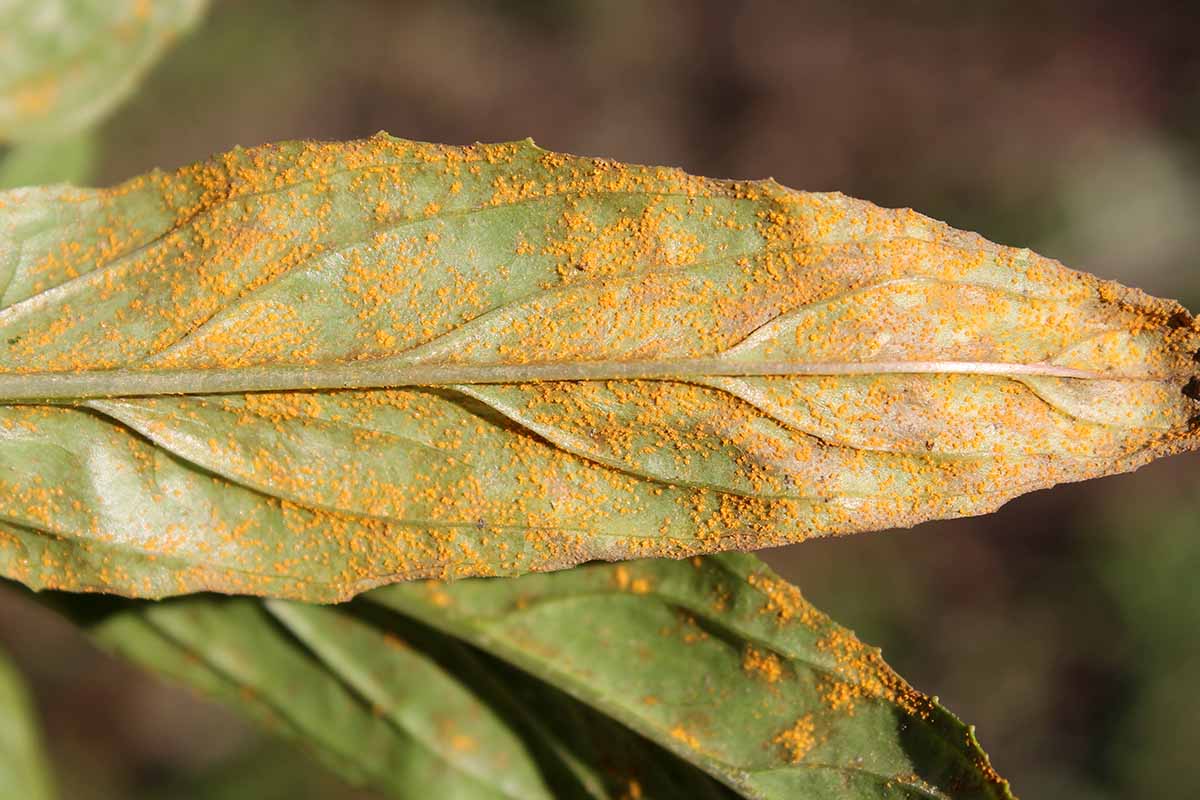
Prune your fuchsia plants and space them appropriately to improve air circulation, and always, always, always water at the soil level and not on the foliage.
If symptoms appear, pluck off all the symptomatic leaves and clean up any that have fallen. Treat the plant with copper fungicide, though you might want to test it on a small section of the plant before spraying the whole thing, since some fuchsias can be sensitive to fungicides.
You’ll likely need to reapply the fungicide every two weeks or so until new, healthy growth emerges.
If the disease is well advanced, cut the plant back to the wood, spray it with copper, and allow it to regrow.
Bonide Liquid Copper Fungicide
Arbico Organics carries Bonide’s liquid copper in 32 ounce ready to use, 16 or 32 ounce hose end, or 16 ounce concentrate.
Pick some up to have on hand and be sure to inspect any plants you bring home for symptoms.
Leaf Us Alone, Diseases!
I wish there was a way to shield all the plants in our garden from diseases, but until someone figures out how to do that reliably, the best we can do is to keep a careful watch for the warning signs.
At least in the case of fuchsias, the warning signs are fairly obvious.
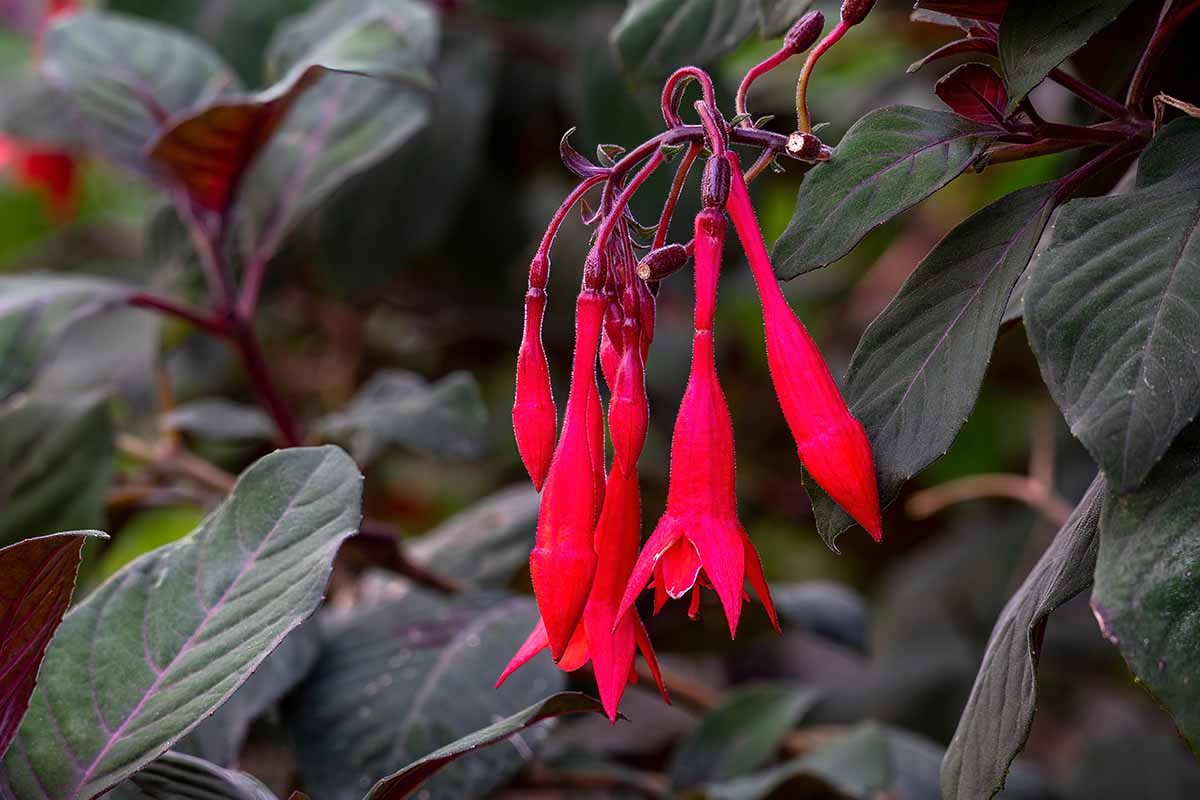
What symptoms are you seeing? Were you able to sort it out using this guide? Do you need additional help? Let us know in the comments section below.
And if you enjoyed this guide and want more information about how to grow fuchsias, add these to your reading list next:



